Cross-posted from Martin North’s DFA Blog.
Yesterday we reported that housing growth fell in March in seasonally adjusted terms, as revealed in the ABS data release. So, given the rise in house prices, why is there a divergence between credit and prices? We already know that some household segments do not need to borrow, because they are downsizing, and investors from overseas are in the market, without the need for loans, but is there something else going on, given the current low average household income growth?
Using the ABS segmentation, we went back to our household surveys. For many, borrowing for construction, or for new purchases, households borrow as much as they can. Households borrowing for established dwellings and refinancing slightly more included to borrow below their maximum limits. We also found that up to 20% of households need to use funds from family or friends to supplement their loans in order to purchase.
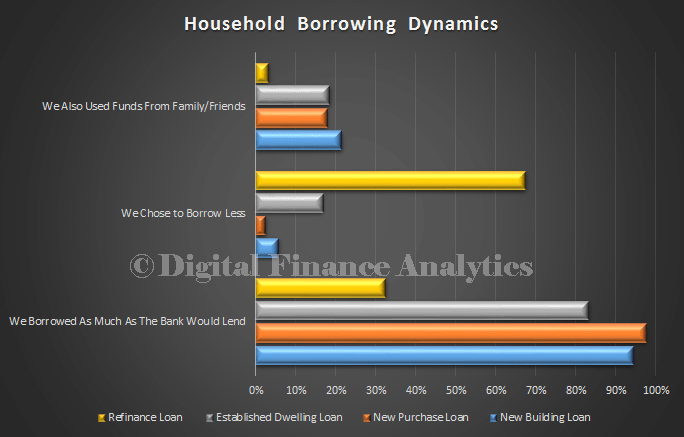
We suggest that households are simply not able to borrow larger loans, thanks to bank’s affordability buffers and lending limits, so whilst there is limited momentum thanks to volume, absolute lending growth remains subdued. Looking at the 3 month moving averages since 2003, we see that average loan sizes are growing very slowly. Whilst the data is noisy, a trend line is helpful. In the case of lending for new builds, and new purchase, the trend is down since the GFC. In the case of established dwellings, there is but a small uptick.
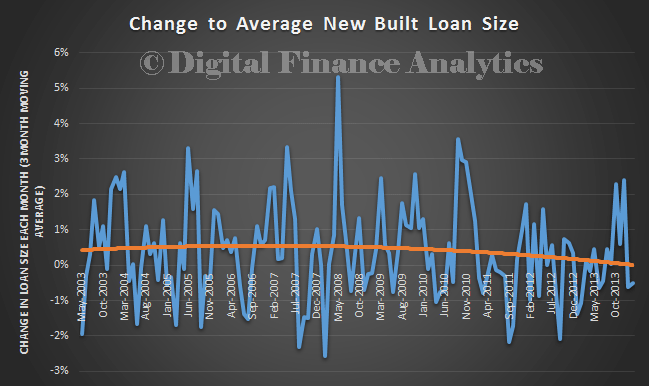
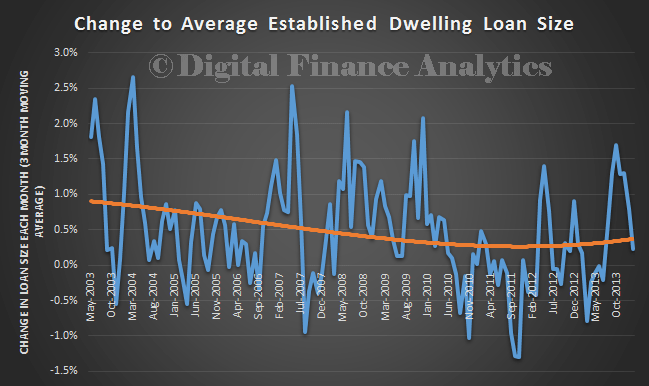
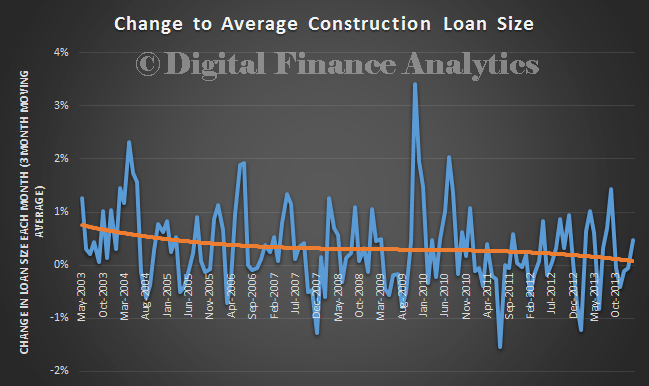
Now, lets look at the monthly plots of value and volume. Refinance of dwellings, and purchase of established dwellings show a slight inflection in values, versus number, but the others are correlated. In addition, we do see a small uplift in lending for construction of dwellings, but little growth in average loan size.
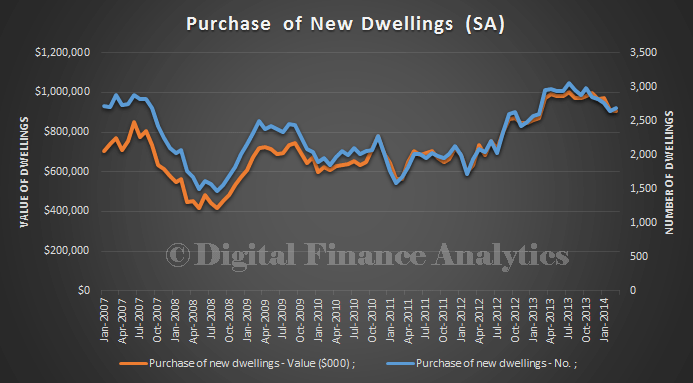
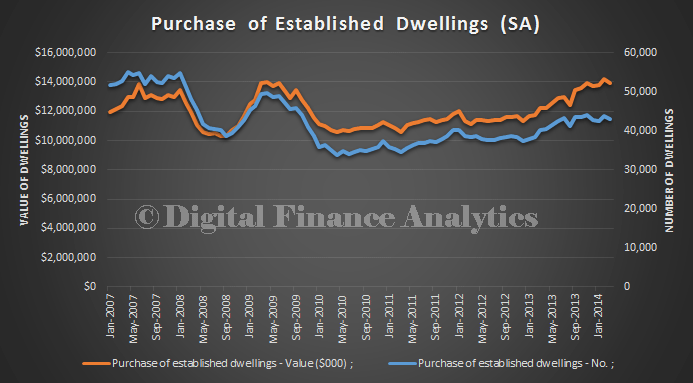
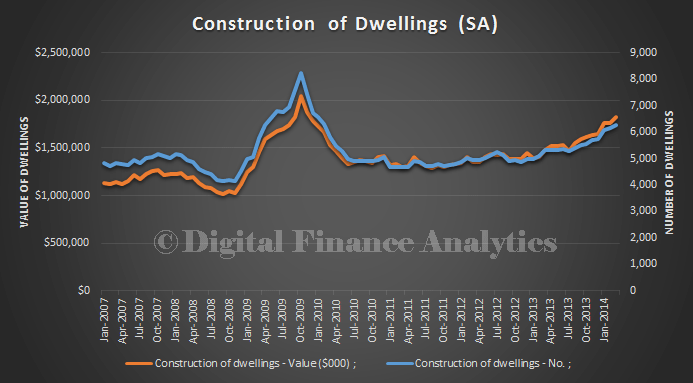
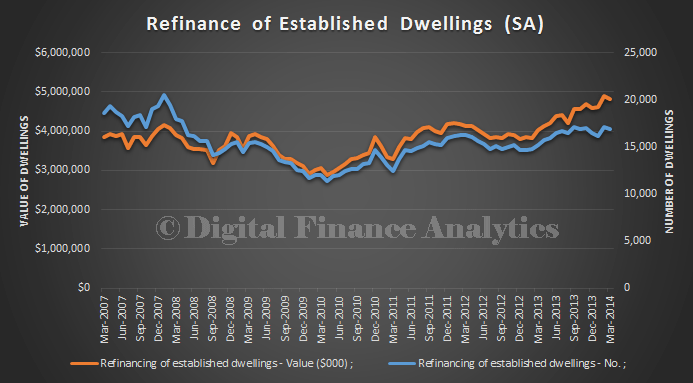
So, because prices are so high relative to incomes, there are limits on the amount individual households may borrow. This also suggest that overall banks lending policies are not being relaxed that much. The main growth lever therefore is volume. Here we know that first time buyers are still sitting out, because they cannot afford to get into the market at current levels.
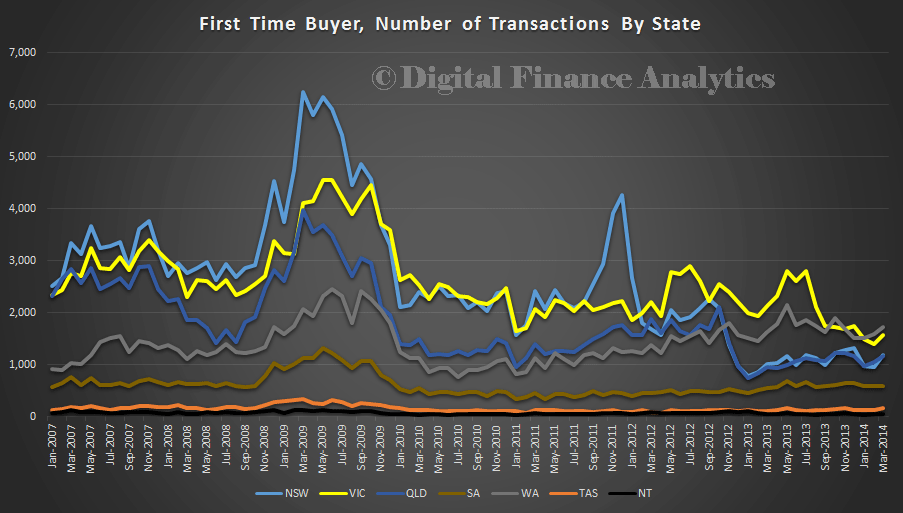
We also highlighted that investors appetite may be slowing. Therefore we believe that overall credit growth will be continue to be contained. Whether this eventually brings house prices back into line with be an interesting question. As we have said already, they are currently out of whack. The RBA has stated that they would be more concerned about buoyant credit growth than house price growth.

